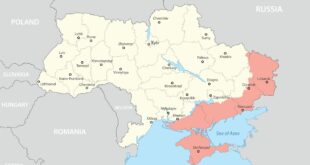While Hillary Clinton is the consensus of most Democrats, from activists on up to the establishment, Donald Trump is the Republican candidate whom many Republicans want to avoid. His feuding with the Bush family and the pointed nonendorsements from Ted Cruz and Mitt Romney brought about a contentious convention that sent Trump into a general election campaign without the full support of his party.
From this perspective, Trump’s position resembles that of Barry Goldwater in 1964 and George McGovern in 1972, two ideologically extreme candidates—Goldwater on the right and McGovern on the left—who were handicapped by strong opposition within their parties, limped through their campaigns, and got destroyed by over 20 percentage points in the general election. To add to the analogy, these candidates’ opponents—Presidents Lyndon Johnson and Richard Nixon—were, like Hillary Clinton, viewed by many voters as cynical, calculating politicians rather than inspiring leaders. Those two years, 1964 and 1972, still stand as cautionary lessons about the fate of any fringe candidate who manages to grab the presidential nomination without having secured the backing of his party’s establishment.
What is happening?
There are several ways that the politics of 2016 are not like 1964 or 1972. The first is political polarization. The liberal and moderate Republicans who would not vote for a warmongering Goldwater in 1964 and the “Nixon Democrats” who could not support McGovern in 1972 are no longer numerous. As many scholars have found using analyses of data from surveys, elections, and congressional voting records, the parties have become more polarized over the past few decades, and cross-party voting has declined.
A second way that this election is different is that Trump, though far from the Republican establishment in many ways, is not ideologically extreme. If extremism were based on ideological and issue positions, its standard-bearer this cycle would’ve been Ted Cruz, not Donald Trump. Trump’s candidacy is similar to Goldwater’s or McGovern’s in being an insurgency, but unlike their campaigns, it is not ideologically distinct from those of other candidates in his party.
But the biggest difference between 2016 and 1964/1972 has nothing to do with the candidates or the conventions or ideology or endorsements or the fracturing of political parties. It turns out that, according to manyyears of research from political scientists, the most important determinants of presidential elections in the past half-century or more have not been the character or political ideology of candidates, or even the strengths of their parties, but rather the state of the economy.
To emphasize the key role of the economy in setting the stage for presidential elections is not to be an economic determinist. Regression models predicting the election outcome from the economy have large error terms. But the economics-based forecast is a good starting point. It’s easy for journalists to focus on political jockeying because it changes from day to day; the economy is a big factor that is just sitting there, not making news every day but setting the baseline for the election. For example, Douglas Hibbs’ “Bread and Peace” model predicts the popular vote in presidential elections given economic growth and military fatalities (with the latter accounting for the 1952 and 1968 elections, in which incumbent-party candidates lost despite running in strong economies).
And here’s what was special about 1964 and 1972: These were two of the three strongest years for the economy in the postwar era, with per-capita income growth in the 4 percent range, and the candidates running for re-election—Johnson and Nixon—won in landslides, as would be predicted. (The other strong election year in terms of economic growth was 1984, when Ronald Reagan reaped the electoral benefit.)
But 2016 is not like 1964 or 1972. The economy is slowly recovering, no longer in recession, but it is certainly not booming as in those earlier years. According to the U.S. Bureau of Economic Analysis, per-capita personal income has been growing at an annual rate of 2.5 percent during the past year and 1.2 percent averaged over the past four years. These numbers are OK but not stunning and do not foretell an electoral landslide, in either direction. Going by economic indicators, we’re looking at a close election, perhaps slightly favoring the incumbent party’s candidate, depending on how strongly one weights the most recent economic performance. Trump, in affect and approach, may well be an outlier; the economy in 2016 is not.
Andrew Gelman is a professor of statistics and political science at Columbia University, and author of several books, including Bayesian Data Analysis, Teaching Statistics: A Bag of Tricks, and Red State Blue State Rich State Poor State: Why Americans Vote the Way They Do.
 Geostrategic Media Political Commentary, Analysis, Security, Defense
Geostrategic Media Political Commentary, Analysis, Security, Defense





